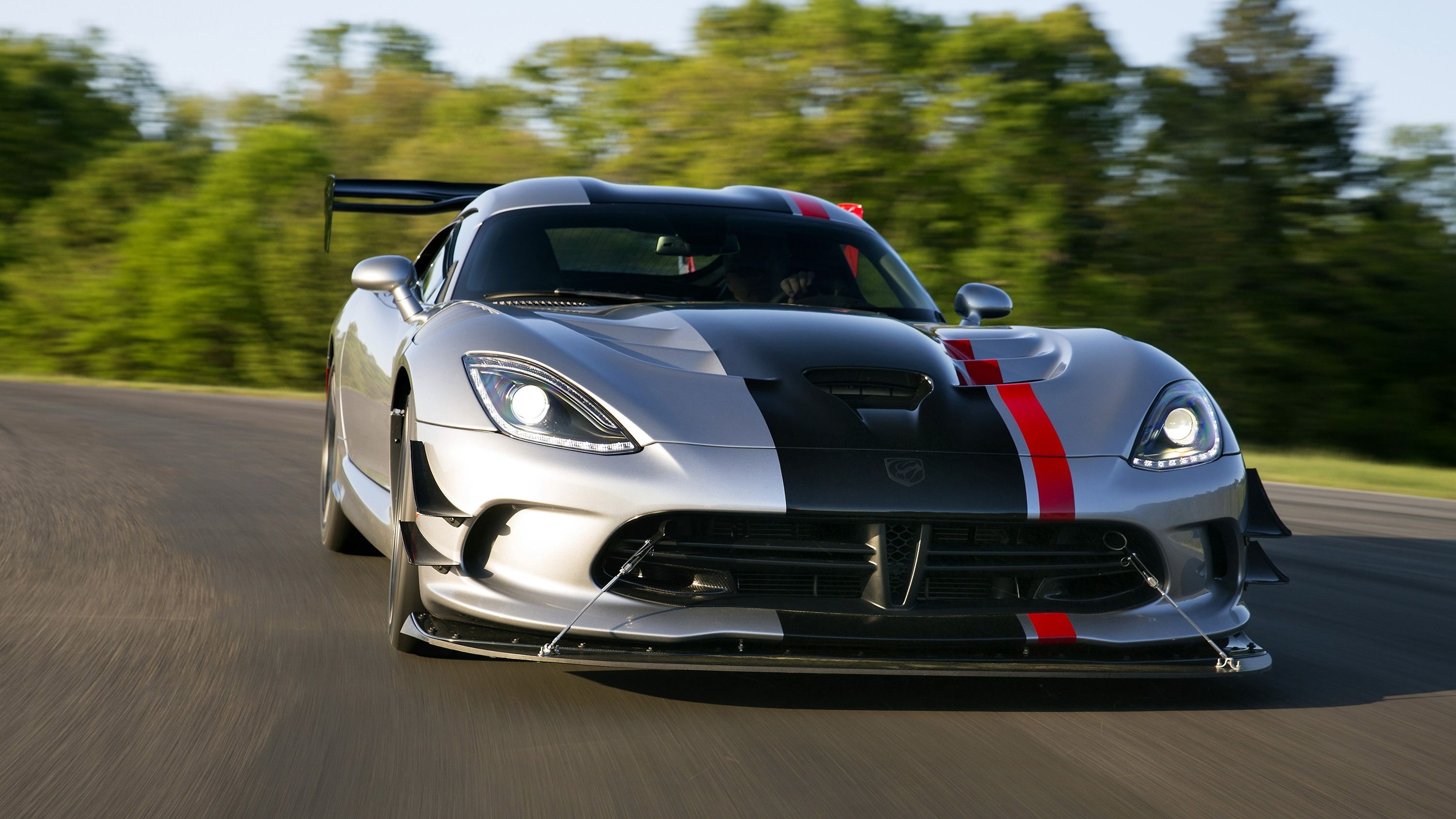Dodge->ke28 has just announced pricing for its recently re-introduced Viper ACR (American Club Racer) model, and is currently taking orders. MSRP is set at $117,895 (before destination and gas guzzler taxes). Upgrades over the base model include a slew of high-performance, track-ready components, which Dodge promises will deliver “ultimate handling, performance and road course domination.” It’s 8.4-liters of lap-time demolition, all in a package you can (legally) drive straight from the pits to your garage.
The ACR was originally unleashed in 1999, followed by the ACR-X for the second gen. The last ACR model we saw was available for the 2010 model year, with Dodge bringing a new concept to SEMA in 2014. The 2016 model was officially unveiled last week, and will be “hand-built” at the improved Conner Avenue assembly plant in Detroit, Michigan, which reopened in 2012 with new equipment and manufacturing techniques.
“This is without a doubt the best Viper ACR ever,” said Tim Kuniskis, President and CEO of Dodge and SRT Brands, FCA North America. “The latest in aerodynamic, braking and tire technology will ensure its legendary performance reputation around the world.”
Production is scheduled to begin in the third quarter of this year, with 2016 models slated to hit dealerships shortly thereafter.
Continue reading to learn more about the 2016 Dodge Viper ACR.
Why it matters
The standard equipment list is exactly what you’d expect from an apex hunter like the ACR. Making the stop are model-exclusive, 15-inch two-piece rotors made from a carbon ceramic matrix and clamped by six-piston calipers from Brembo. Handling tuning is provided via 10-setting, double-adjustable Bilstein coilover racing shocks with up to three inches of height adjustment. Kumho Ecsta V720 tires, which were designed specifically for the 2016 ACR, fulfill the rubber duties. These slabs of sticky measure in at a colossal 295/25/R19 in the front and 355/30R19 in the back. Dodge claims the compound can deliver lap times that are “1.5 seconds faster than off-road only race tires.” Inside, there’s lightweight carpeting, a “minimal” three-speaker stereo system, and manual seats, all of which contribute to the 50/50 weight distribution. There’s also Alcantara upholstery, ACR badging, and accent stitching.
Options include the “1 of 1” customization program, as well as an ACR Extreme Aero Package that throws on a humungous dual-element carbon-fiber rear wing, carbon-fiber rear diffuser, SRT hood with removable louvers, a detachable extension for the front splitter, and additional dive planes. Peak downforce at top speed is rated at nearly a ton.
The massive V-10 creates 645 horsepower and 600 pound-feet of torque, which Dodge claims is the most torque of any NA sports-car engine in the world. With a proper setup, the ACR can purportedly achieve a sustainable 1.5 g of lateral acceleration.
It’s all quite impressive, and should do well to bolster the snake’s current standing among the modern crop of performance vehicles. Once upon a time, the Viper was considered a top dog in the super car world. Nowadays, it’s more of a throwback, a dinosaur next to the aluminum-chassis Chevy Z06 or the complicated nergasm Nissan GT-R.->ke1592 It makes speed in an old-school way, with tech that definitely shows its age – huge displacement under the hood, enormous tires in the corners, and gigantic wings at both ends.
It’s simple, certainly, but it’s also ruthlessly effective. And therein lies the appeal of something like the Viper ACR – buyers aren’t interested in being early-adopters or having their skills boosted by driving nannies. ACR pilots want the kind of efficiency you get from pouring gasoline on a bonfire. The draw is still quick lap times, but the method of getting there is through dogged exuberance, not clever manipulation. It’s a naturally aspirated V-10 bellow, not a surging and spooling forced-induction whine.
Normally, I loathe that old played-out comparison of “analog vs. digital,” but with the ACR, I can’t help but praise Dodge’s commitment to a row-your-own attitude in a world infested with dual-clutch slush boxes. Because after all, isn’t that what a track car is supposed to be all about? That raw connection between you, your car, and the track, without some electronic black box stuck in between, dictating what’s appropriate?
Basically, when tech like Porsche’s InnoDrive system (a semi-autonomous adaptive cruise control that can corner at up to 0.7 g) finally hits the track-day scene, you can bet there won’t be any Viper owners pressing the on button. That is, assuming the Viper is still around by then.
2016 Dodge Viper ACR
Read our full review here.

